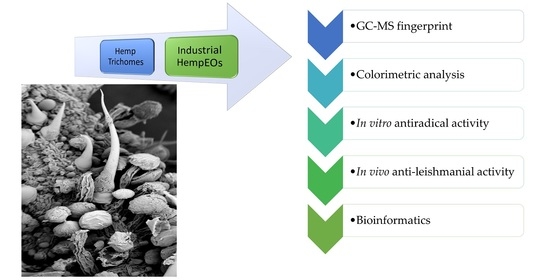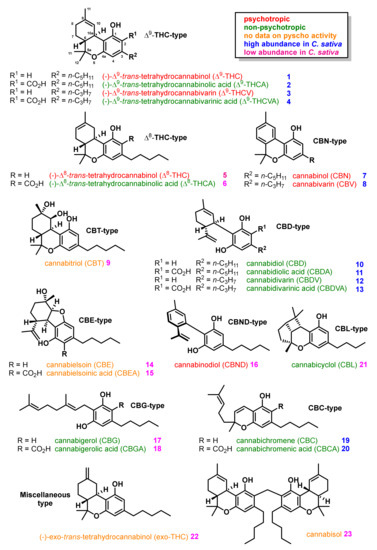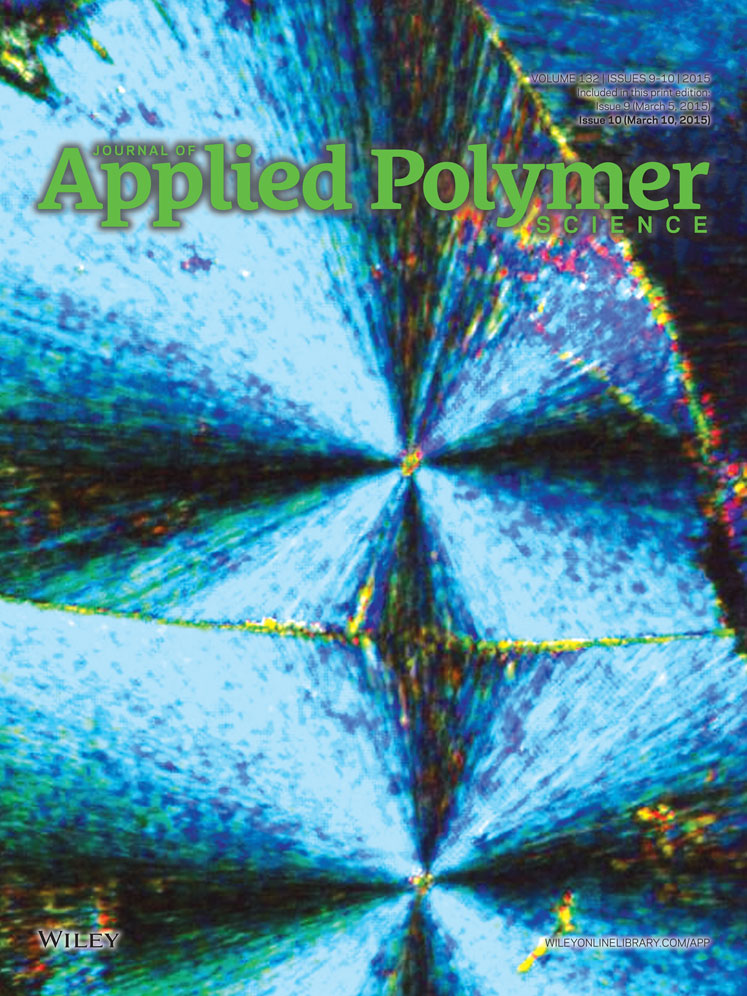 “Industrial hemp is a multiuse crop that has been widely cultivated to produce fibers and nutrients. The capability of the essential oil (EO) from inflorescences as antimicrobial agent has been reported. However, literature data are still lacking about the hemp EO antiprotozoal efficacy in vivo.
“Industrial hemp is a multiuse crop that has been widely cultivated to produce fibers and nutrients. The capability of the essential oil (EO) from inflorescences as antimicrobial agent has been reported. However, literature data are still lacking about the hemp EO antiprotozoal efficacy in vivo.
The present study aims to unravel this concern through the evaluation of the efficacy of hemp EOs (2.5 mL/kg, intraperitoneally) of three different cultivars, namely Futura 75, Carmagnola selezionata and Eletta campana, in mice intraperitoneally infected with Leishmania tropica. A detailed description of EO composition and targets-components analysis is reported.
Myrcene, α-pinene and E-caryophyllene were the main components of the EOs, as indicated by the gas-chromatographic analysis. However, a prominent position in the scenario of the theoretical interactions underlying the bio-pharmacological activity was also occupied by selina-3,7(11)-diene, which displayed affinities in the micromolar range (5.4-28.9) towards proliferator-activated receptor α, cannabinoid CB2 receptor and acetylcholinesterase. The content of this compound was higher in Futura 75 and Eletta campana, in accordance with their higher scavenging/reducing properties and efficacy against the tissue wound, induced by L. tropica.
Overall, the present study recommends hemp female inflorescences, as sources of biomolecules with potential pharmacological applications, especially towards infective diseases.”
https://pubmed.ncbi.nlm.nih.gov/33673274/
https://www.mdpi.com/2218-273X/11/2/272


 “Methicillin-resistant Staphylococcus aureus (MRSA) has proven to be an imminent threat to public health, intensifying the need for novel therapeutics.
“Methicillin-resistant Staphylococcus aureus (MRSA) has proven to be an imminent threat to public health, intensifying the need for novel therapeutics.
 “The growing concern on the antibiotic resistance spreading among bacteria has stimulated the search for valuable alternatives from plant sources.
“The growing concern on the antibiotic resistance spreading among bacteria has stimulated the search for valuable alternatives from plant sources.
 “The
“The  “Dental plaque is a complex biofilm that gets formed on the teeth and acts as a reservoir of different microbes. It is the root cause for the occurrence of several dental problems and diseases, including cavities, bad breath, bleeding gums, tooth decay, and tooth loss. Therefore, it should be regularly removed using suitable oral care aids.
“Dental plaque is a complex biofilm that gets formed on the teeth and acts as a reservoir of different microbes. It is the root cause for the occurrence of several dental problems and diseases, including cavities, bad breath, bleeding gums, tooth decay, and tooth loss. Therefore, it should be regularly removed using suitable oral care aids. “The spread of antimicrobial resistance continues to be a priority health concern worldwide, necessitating exploration of alternative therapies.
“The spread of antimicrobial resistance continues to be a priority health concern worldwide, necessitating exploration of alternative therapies. “Hemp (Cannabis sativa L.) is an eco‐friendly and multifunctional plant. Hemp hurd is a by‐product of hemp plant during hemp fiber separation. Although hemp hurd is repeatedly announced owing antibacterial activity, it has never been systematically investigated and reported. In this study, the antibacterial activity of hemp hurd powder against Escherichia coli is investigated. This article reveals antibacterial activity of hemp hurd where hemp hurd powder inhibits the growth of E. coli. Meanwhile, the self‐contamination (forming during retting process) inside hemp hurd has dramatic impact on the antibacterial performance. To achieve better antibacterial activity, hemp hurd was heat treated to eliminate self‐contaminations. The impact of the particle sizes and heat treatment on the antibacterial effectiveness was evaluated.”
“Hemp (Cannabis sativa L.) is an eco‐friendly and multifunctional plant. Hemp hurd is a by‐product of hemp plant during hemp fiber separation. Although hemp hurd is repeatedly announced owing antibacterial activity, it has never been systematically investigated and reported. In this study, the antibacterial activity of hemp hurd powder against Escherichia coli is investigated. This article reveals antibacterial activity of hemp hurd where hemp hurd powder inhibits the growth of E. coli. Meanwhile, the self‐contamination (forming during retting process) inside hemp hurd has dramatic impact on the antibacterial performance. To achieve better antibacterial activity, hemp hurd was heat treated to eliminate self‐contaminations. The impact of the particle sizes and heat treatment on the antibacterial effectiveness was evaluated.” “Membrane vesicles (MVs) released from bacteria participate in cell communication and host-pathogen interactions.
“Membrane vesicles (MVs) released from bacteria participate in cell communication and host-pathogen interactions. “Volatile terpenes represent the largest group of
“Volatile terpenes represent the largest group of 